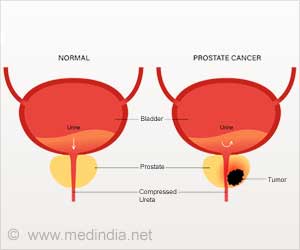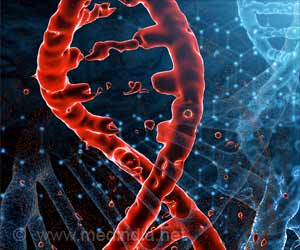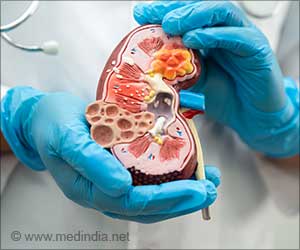Gilteritinib is specifically designed to help Acute myeloid leukemia(AML) patients with FTL3 mutations who have no specific therapies available beyond chemotherapy.

‘Patients with FLT3 mutations in relapsed or refractory AML have low response rate to chemotherapy along with poor survival. Gilteritinib pill could address this issue.’
Read More..




"Patients with FLT3 mutations who have relapsed or refractory AML have very low response rates to chemotherapy at the time of relapse, and their survival is poor as a result," Perl said. "This drug is specifically designed to help this group of patients, and now we've shown it can make a huge difference for those who, until recently, had no specific therapies available beyond chemotherapy." Read More..
An estimated 19,000 patients will be diagnosed with AML in the United States this year. FLT3 is the most commonly mutated gene in AML and is found in about 30 percent of patients' leukemia cells. The FLT3 gene is expressed in normal bone marrow cells and regulates the orderly growth of blood cells in response to daily demands. When the gene is mutated in a leukemia cell, however, the cancer cells grow in an uncontrolled manner unless the function of FLT3 is turned off by drugs like gilteritinib.
Gilteritinib is a pill patients take once a day, and previous studies have shown it can inhibit activity in AML patients with the two most common types of FLT3 mutations. The first is called FLT3 internal tandem duplication (FLT3-ITD) and is associated with aggressive disease behavior, frequent relapse, and short remission duration. The overall survival for patients with relapsed or refractory FLT3-ITD mutated AML historically has been an average of about four months with current therapies. To lower relapse risk, oncologists often recommend the most aggressive chemotherapy approaches for AML patients with FLT3-ITD, including marrow transplantation. The second FLT3 mutation gilteritinib targets occurs in the gene's tyrosine kinase domain (TKD) and is associated with resistance to a number of previously developed FLT3 inhibitors.
In the ADMIRAL trial, 371 patients were randomized, with 247 receiving gilteritinib and 124 receiving chemotherapy. The patients who took gilteritinib had a median overall survival of 9.3 months compared to 5.6 months for the chemotherapy patients. At one year, 37 percent of patients on gilteritinib were still alive, compared to 16.7 percent of patients in the chemotherapy group. The combined rates of complete remissions (CR) or CR with partial hematologic recovery (CRh) were 34 percent for the gilteritinib arm and 15 percent for the chemotherapy arm.
"Across the board, this trial shows gilteritinib carries a clear survival benefit, meaning we now have a targeted, highly-effective, and well-tolerated treatment option for a group of truly high-risk patients," Perl said.
Advertisement
"Although the incidence of various side effects was similar across the study arms, patients took gilteritinib for considerably longer than they underwent chemotherapy," Perl said. "This actually means the likelihood of side effects on a daily basis is lower on this drug, and this favorable side effect profile allowed us to give gilteritinib as an outpatient treatment, a huge shift for these patients."
Advertisement
Perl is leading these trials at Penn and says focusing on preventing, rather than treating relapse by using active and well tolerated new agents early in disease course could substantially increase cure rates for this high-risk leukemia population.
Source-Eurekalert










